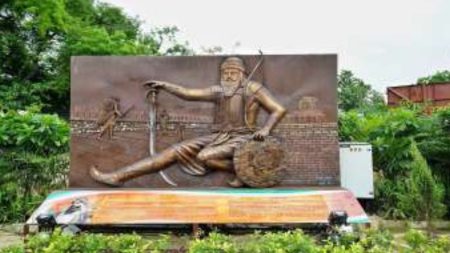This new discovery shines a light on Central India’s great potential to harbor hidden dinosaur fossils that upon discovery may provide more information on a particular species.

Madhya Pradesh witnessed a very unique discovery wherein an ‘egg inside an egg’ dinosaur egg was unearthed during a field trip by the research team of Delhi University. Apparently deemed as the first-of-a-kind discovery in the history of archaeology. This new discovery also shows that Central and Western India hold great potential for fossils of dinosaurs and subsequent discoveries may lead to more important information on particular species.
In a study published in the Journal of Scientific Reports, this unearthing of the fossil is being considered rare and a critical find as ‘ovum-in-ovo’ has never been found in reptiles up till now. It also further states that finds like this could successfully provide more detailed insights into the biology of reproduction in dinosaurs and whether the process was either analogous to those of lizards or turtles or to birds and crocodiles.
An area considered the Upper Cretaceous Lameta Formation that stretches over 5,000 km in the West and Central India, is renowned for unearthings of dinosaur fossils. A large number of nests were recognized as that of Titanosaurid Sauropod was discovered near Padlya village located near Bagh town. The researchers while working discovered an ‘abnormal’ egg from the Sauropod dinosaur’s nest containing a total of 10 eggs including the abnormal one.
The microstructure of the eggs including the abnormal one was recognized to belong to that of titanosaurid sauropod dinosaurs.
Before this discovery, no other similar absurd eggs were discovered in dinosaurs and even in the case of other reptiles like crocodiles, lizards, and turtles, according to the sources.
According to several studies, they all pointed out that dinosaurs had reproductive biology and processes analogous to that of turtles and other reptiles in comparison to the disparate reproductive tract seen in birds and crocodiles. This recent discovery of ‘ovum-in-ovo’ egg from a titanosaurid nest opens up the probable possibility that the sauropods showed an oviduct morphology like birds and crocodiles and lately may have acclimatized with the process of laying eggs like birds, according to Dr. Harsha Dhiman, a DU researcher who also served as the lead author of the paper.













